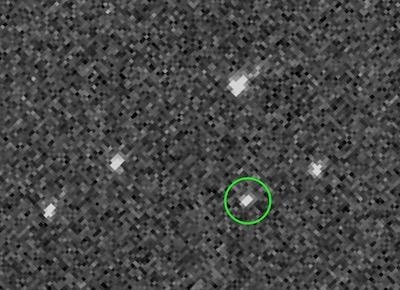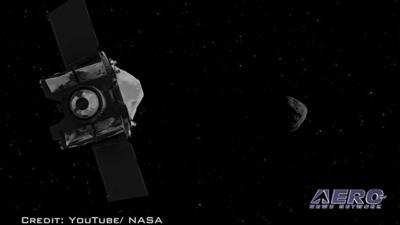Sat, Sep 15, 2018
Takes First Scientific Observations Of Asteroid Bennu
The OSIRIS-REx spacecraft has begun its science mission as it continues to approach near-Earth asteroid Bennu, Space.com reports.

Mission principal investigator Dante Lauretta, a professor of planetary science and cosmochemistry at the University of Arizona's Lunar and Planetary Laboratory, Tweeted "Big day for @OSIRISREx — we start our first science observations — searching for dust plumes around Bennu" on Tuesday.
NASA says that as OSIRIS-REx approaches the asteroid, the spacecraft will use its science instruments to gather information about Bennu and prepare for arrival. The spacecraft’s science payload comprises the OCAMS camera suite (PolyCam, MapCam, and SamCam), the OTES thermal spectrometer, the OVIRS visible and infrared spectrometer, the OLA laser altimeter, and the REXIS x-ray spectrometer.
During the mission’s approach phase, OSIRIS-REx will:
- regularly observe the area around the asteroid to search for dust plumes and natural satellites, and study Bennu’s light and spectral properties;
- execute a series of four asteroid approach maneuvers, beginning on Oct. 1, slowing the spacecraft to match Bennu’s orbit around the Sun;
- jettison the protective cover of the spacecraft’s sampling arm in mid-October and subsequently extend and image the arm for the first time in flight; and
- use OCAMS to reveal the asteroid’s overall shape in late-October and begin detecting Bennu’s surface features in mid-November.
- After arrival at Bennu, the spacecraft will spend the first month performing flybys of Bennu’s north pole, equator, and south pole, at distances ranging between 11.8 and 4.4 miles (19 and 7 km) from the asteroid. These maneuvers will allow for the first direct measurement of Bennu’s mass as well as close-up observations of the surface. These trajectories will also provide the mission’s navigation team with experience navigating near the asteroid.

“Bennu’s low gravity provides a unique challenge for the mission,” said Rich Burns, OSIRIS-REx project manager at NASA’s Goddard Space Flight Center in Greenbelt, Maryland. “At roughly 0.3 miles [500 meters] in diameter, Bennu will be the smallest object that any spacecraft has ever orbited.”
The spacecraft will extensively survey the asteroid before the mission team identifies two possible sample sites. Close examination of these sites will allow the team to pick one for sample collection, scheduled for early July 2020. After sample collection, the spacecraft will head back toward Earth before ejecting the Sample Return Capsule for landing in the Utah desert in Sept. 2023.
(Source: NASA and as cited. Image from file)
More News
Also: Tentative AirVenture Airshow Lineup, Supersonic Flight Regs, Private Pilot Oral Exam Guide, Boeing Deal The sport aircraft business can be a tough one... especially when Moth>[...]
Also: Virtual FLRAA Prototype, IFR-Capable Autonomous A/C, NS-32 Crew, Golden Dome Missile Defense Bombardier announced that the first production Global 8000 successfully completed>[...]
On-Course Indication An indication on an instrument, which provides the pilot a visual means of determining that the aircraft is located on the centerline of a given navigational t>[...]
“While we are relieved that no one was injured, the destruction of our aircraft will have severe consequences on our operations, and it is a personal blow to our dedicated te>[...]
Aero Linx: Ercoupe Owners Club We fly an airplane that was the peak of pre-World War II development. It took more than a decade and a half before the features of the Ercoupe were t>[...]
 Airborne 05.19.25: Kolb v Tornados, Philippine Mars, Blackhawk Antler Theft
Airborne 05.19.25: Kolb v Tornados, Philippine Mars, Blackhawk Antler Theft Airborne 05.23.25: Global 8000, Qatar B747 Accepted, Aviation Merit Badge
Airborne 05.23.25: Global 8000, Qatar B747 Accepted, Aviation Merit Badge ANN's Daily Aero-Term (05.23.25): On-Course Indication
ANN's Daily Aero-Term (05.23.25): On-Course Indication Aero-News: Quote of the Day (05.23.25)
Aero-News: Quote of the Day (05.23.25) ANN's Daily Aero-Linx (05.23.25)
ANN's Daily Aero-Linx (05.23.25)




